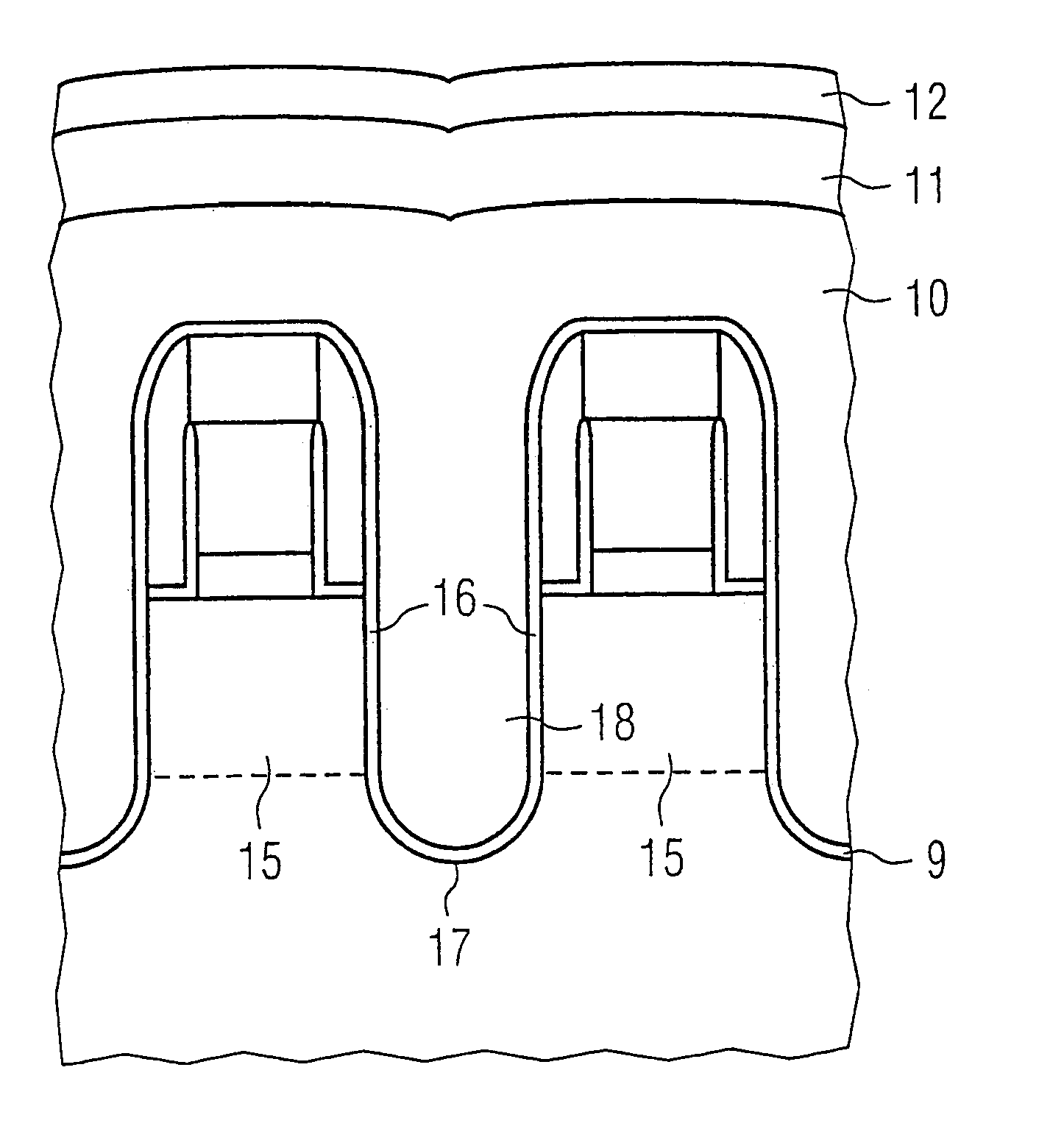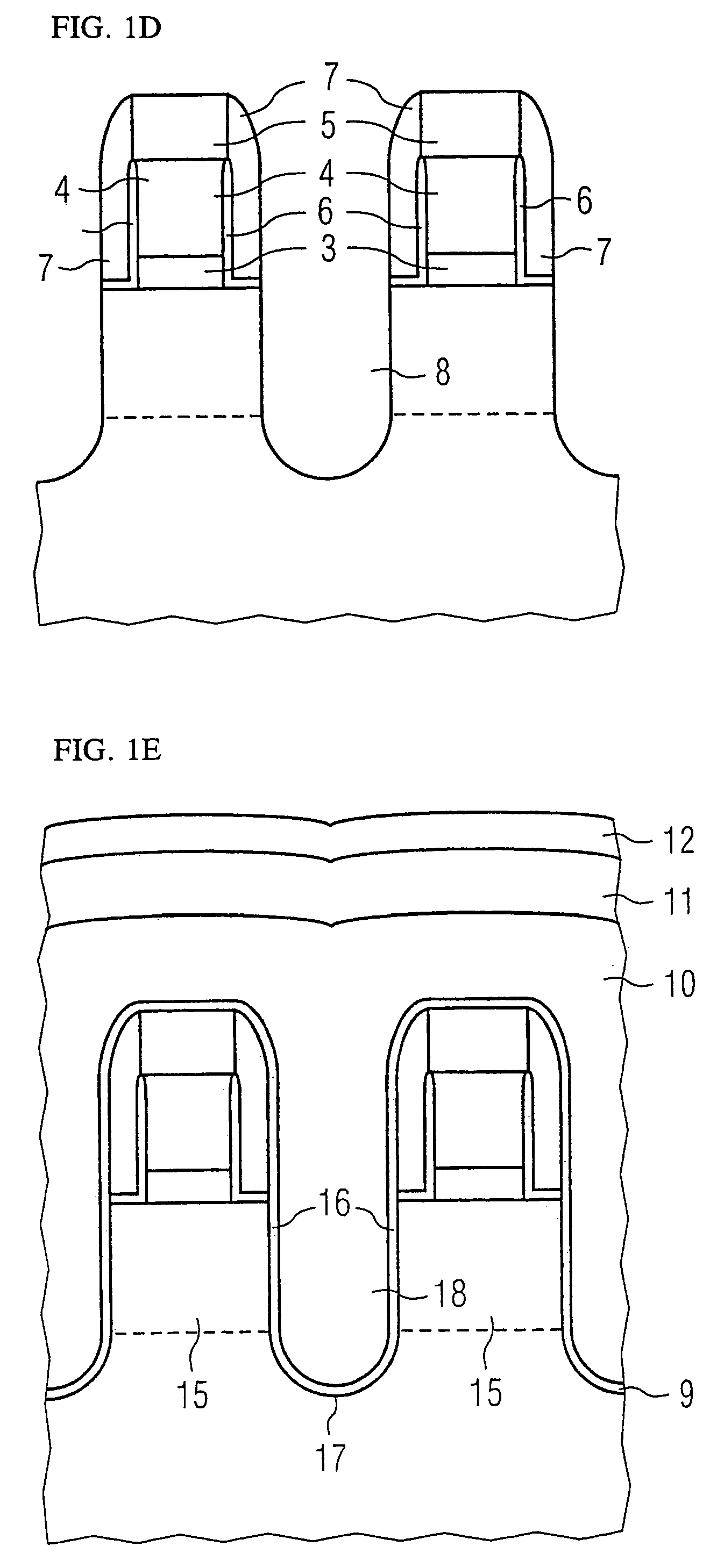Method for fabricating NROM memory cells with trench transistors
a technology of trench transistors and memory cells, which is applied in the direction of transistors, semiconductor devices, electrical apparatus, etc., can solve the problems of small nonvolatile memory cells, inability to achieve large storage capacities in the context of conventional fabrication technologies, and the channel length of memory transistors cannot be significantly less than 200 nm, and achieve good electrical junction
- Summary
- Abstract
- Description
- Claims
- Application Information
AI Technical Summary
Benefits of technology
Problems solved by technology
Method used
Image
Examples
Embodiment Construction
[0018]A preferred exemplary embodiment of the method begins, in accordance with the cross-section illustrated in FIG. 1A, proceeding from a semiconductor body 1 or a semiconductor layer 1 applied on a substrate, on which firstly a pad oxide / nitride 2 is applied in a manner known per se. The semiconductor body 1 preferably has a basic doping which is weakly p-conducting. At the top side provided with the pad oxide 2, an n+-doped well is formed by introduction of dopant. The pad oxide layer later serves as an etching stop layer 2. An oxide is preferred here, although in principle any material with respect to which the material of the bit line layers to be applied can be etched selectively is suitable as an etching stop layer 2.
[0019]Preferably, all STI isolations (shallow trench isolation) are fabricated at this point in the method. The STI isolations (not shown) may surround the entire memory cell array or individual blocks of the memory cell array. It is possible, in addition, to pr...
PUM
 Login to View More
Login to View More Abstract
Description
Claims
Application Information
 Login to View More
Login to View More - R&D
- Intellectual Property
- Life Sciences
- Materials
- Tech Scout
- Unparalleled Data Quality
- Higher Quality Content
- 60% Fewer Hallucinations
Browse by: Latest US Patents, China's latest patents, Technical Efficacy Thesaurus, Application Domain, Technology Topic, Popular Technical Reports.
© 2025 PatSnap. All rights reserved.Legal|Privacy policy|Modern Slavery Act Transparency Statement|Sitemap|About US| Contact US: help@patsnap.com



